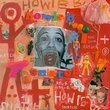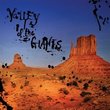| All Artists: Masters of Persian Music Title: Without You Members Wishing: 0 Total Copies: 0 Label: World Village USA Release Date: 10/8/2002 Album Type: Import Genres: International Music, Pop Style: Middle East Number of Discs: 1 SwapaCD Credits: 1 UPC: 713746801120 |
Search - Masters of Persian Music :: Without You
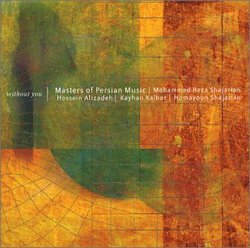 | Masters of Persian Music Without You Genres: International Music, Pop
From the first moment when Alizadeh's lute gently breaks the surrounding silence, Masters of Persian Music holds you spellbound. Four top virtuosi, including a father and son, take Iran's ancient musical forms and turn the... more » |
Larger Image |
CD DetailsSynopsis
Amazon.com From the first moment when Alizadeh's lute gently breaks the surrounding silence, Masters of Persian Music holds you spellbound. Four top virtuosi, including a father and son, take Iran's ancient musical forms and turn them into a timelessly compelling entertainment. The first thing that strikes you about this music is how spare it is: voice, lute, fiddle, and drum are rarely all heard simultaneously; each takes its turn in the spotlight to improvise with economical deliberation. You may also be struck by the way each instrument shadows the others--with the voice merely first among equals--picking up the same melodic phrases, and repeating them higher or lower. And you will become aware of the richness of nuance woven into every note; this expressiveness lies at the core of Persian classical music. Its alternating high-and-low, question-and-answer phrases are often described as "aloud and silent"--a paradox that nicely reflects its mystical religious roots. Transmission of this art has always been from master to pupil, "from chest to chest," as Iranian musicians say. Kayhan Kalhor learned his art in the dark days when his instrument was regarded as hopelessly passé. His tenacity is now reaping well-deserved rewards. --Michael Church Similarly Requested CDs
|
CD ReviewsExotic and professional J. TIMMERMAN | Lawson, NSW Australia | 06/03/2004 (5 out of 5 stars) "Persian classical music is contemplative music linked to the poetry of Sufism. It belongs to a rich and ancient heritage, developed in the royal courts of Iran at least back to the 7th century A.D., and restricted to those courts until the 20th century. Since then the music has undergone change. It began to be performed at small gatherings at the homes of musicians and patrons of the arts. Following the advent of sound recording it became available to a wider audience, but went into decline after the 60s, giving way to pop music. Then after the revolution of 1979 there was a reawakening of tradition and the music once again became popular, being taught in classes rather than on a one-to-one basis, and played at concerts. In the last twenty years it has undergone further change by musicians exploring new avenues of expression while retaining the essence of the music.Poetry is an important ingredient. The vocal sections of this recording are set to the poetry of medieval mystic poets like Baba Taher (11th C.), Sheikh Attar (12th C.) and Hafez (14th C.), as well as contemporary poets.Creative performance is also an important ingredient. Persian Classical music is based on short modal pieces, often with just a melody line and a drone. The works on this CD are based on "dastagh Nava", a mode whose scale is similar to a minor scale with a slightly raised second, and embellished with virtuoso improvisations.Instruments played are the tar (a plucked lute), a kamancher (spike fiddle) and a tombak (goblet drum).This is a live concert featuring four prominent virtuoso musicians of Iran, bringing them together for the first time. The music is alternatively intense and meditative, flowing sinuously and vibrantly like a Persian carpet. Vocals may take a little getting used to but their exquisite fluidity is totally arresting, delivered by the undisputed master of Persian classical singing, Mohammad Reza Shajarian. The instrumental sections pulsate with energy and deft improvisation.Recording quality is excellent. This is a special album for those keen on exploring the unusual and exotic." Great CD of Iranian Classical Music Ali | 08/14/2005 (4 out of 5 stars) "The Persian (Iranian) Classical Music system was not developed upon the Arabic invasion of 7th century A.D, nor within the Safavid court. Persian music dates back to the pre-Islamic, Sassanid Dynasty (224BC-651AD)of Iran and was created by Sassanid court musicians much before the Arabic invasion. These musicians were Borbad, Nakisa, and Ramtin and created a system of 7 royal modes, 30 derivative modes and 365 melodic movements branching from the modes, one melody for each day of the year. This was the first musical system in the entire Middle East! It was known as the "Khosravani" and the "Dasgtah." The royal music functioned as court entertainment, but more importantly within religious contexts. The divine mantras of Prophet Zoroaster (Prophet of the world's first monotheistic religion) were sung within the modes as studies by www.raasti.com have shown us. Purely Iranian musical instruments are: Ney (reed flute, earliest known instrument), barbat (what Arabs call the Ud, created in Iran around 800BC), tambur (dates to around same time as barbat), setar (came after tambur), tar(came with setar but evolved to its present form later), dotar (same as setar), kamancheh(same time as barbat), gheichak, neyanban, sorna, balaban, tombak, dap (upon Arab invasion called "daf" because Arabs cannot say "p," This instrument dates back to Achaemenid Dynasty of Iran as is depicted on the ancient bass relief "Bistun") dayre, robab, and chang (harp, which dates back to 2000BC in Iran). These instruments were all used in Sassanid era of Iran through all the dynasties in between and to present day. Upon the Arab-Islamic invasion of a Zoroastrian Iran, music was banned by Arab-Islamic fanatics and later by Iranian fanatics who had converted to Islam. The music was still practiced by masters and passed down to students in the same oral tradition. Once Iranians reclaimed their rule, they brought back musical activity. The Arabic language had an impact on Parsi (Farsi) because Iranians were forced to have Arabic as an official language. Later, Parsi became the official language once again. While some words in Parsi were replaced by Arabic words, Parsi remains the same Parsi spoken during the Sassanid era alongside the Pahlavi language. Because of Arabic lone words, the musical modes were called "mayehs" or "maqam" but they were the same Sassanid modes and melodies. The art of singing poetry originated within the Sassanid Era. That's how they sung the Zoroastrian manthras within the modes. Non-religious poetry was also written and indeed sung by Borbad and other musicians during the Sassanid era. After the introduction of Islam, and by the Safavid era, Zoroatrian manthras no longer accompanied music. Songs of Islamic tales and poems by 9th-14th century Iranian poets such as Rudaki, Rumi, Attar, Khayyam, and Hafez replaced the manthras and pre-Islamic poems. The fact that Iranian Classical Music is a spiritual tool dates back to even before the Sassanid and Achaemenid Dynasty of Iran! It is strictly an Iranian view that through music, one finds God. It has been since pre-Zoroastrian times. This is why Iranians incorporated music into Islam and founded their own branch of Islam known as Sufism! Anyway, during the Qajar Dynasty of Iran, the ancient Sassanid modal system was gathered, revived and organized within a framework called the "Radif." There are 12 modes (dastgah) and 200 melodic movements (gushe). The majority of the modes and melodic mocements are from that ancient Sassanid system. But, because of the evolving nature of music, a few of the melodies were altered and a few others were added through time. The ancient compositions that were lost are because of those religious fanatics or because they weren't crucial." Modern Persian music from a profoundly deep tradition Joe Sixpack -- Slipcue.com | ...in Middle America | 11/11/2002 (4 out of 5 stars) "Master vocalist Mohammad Reza Shajarian evokes Iran's ancient classical tradition, as well as its deep love of poetry. This fluid performance wraps improvisational, exploratory musicianship around the mystical texts of several medieval Persian poets. Shajarian is once again joined by Kayhan Kalhor, of Ghazal, as well as "tar" virtuoso Hossein Alizadeh and percussionist and co-vocalist Homayoun Shajarian, Mohammad Reza's son. This album is a searching effort, at times a little formless, while at others haunting and incandescent. Worth checking out, particularly if you liked any of the earlier Kalhor/Shajarian collaborations."
|

 Track Listings (12) - Disc #1
Track Listings (12) - Disc #1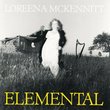




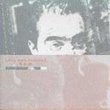
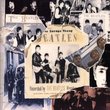
![Shoe Box EP [ENHANCED]](https://nationalbookswap.com/cd//m/50/8550/238550.jpg)
